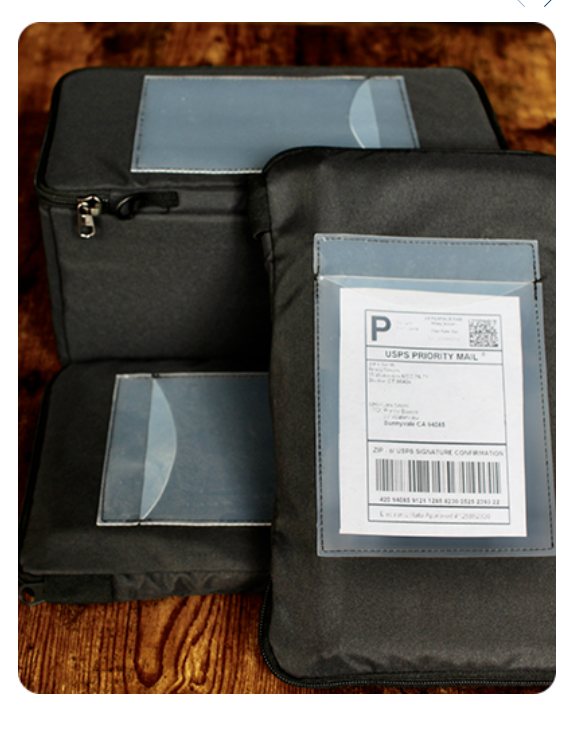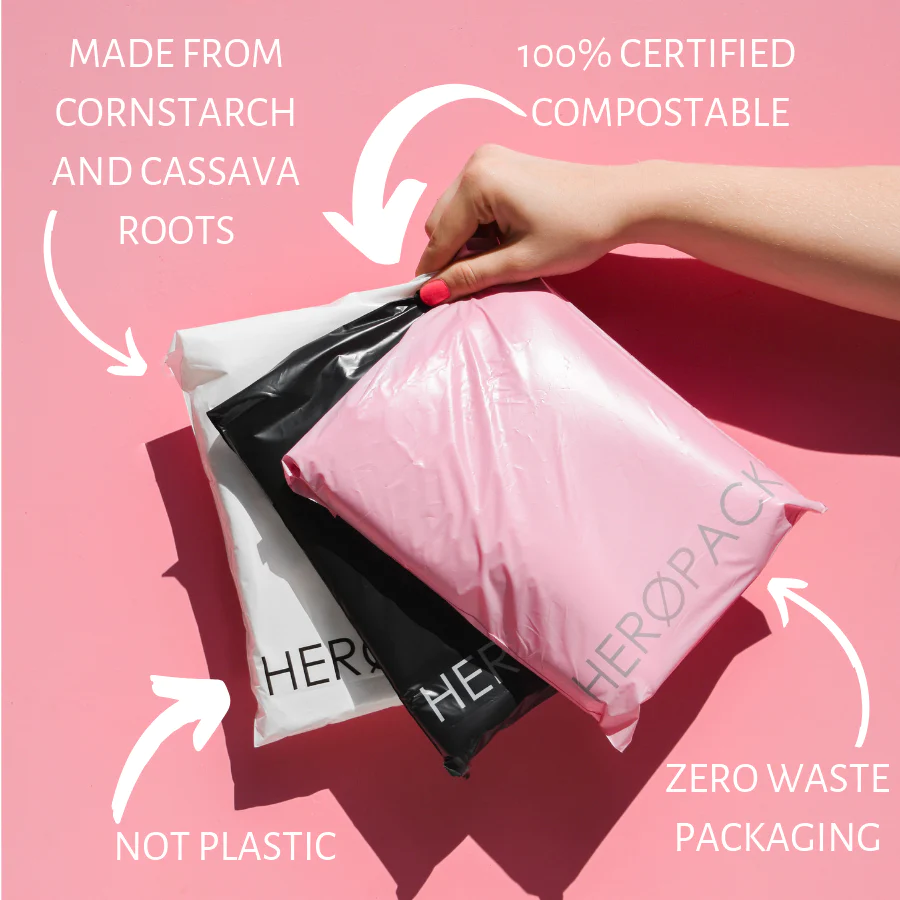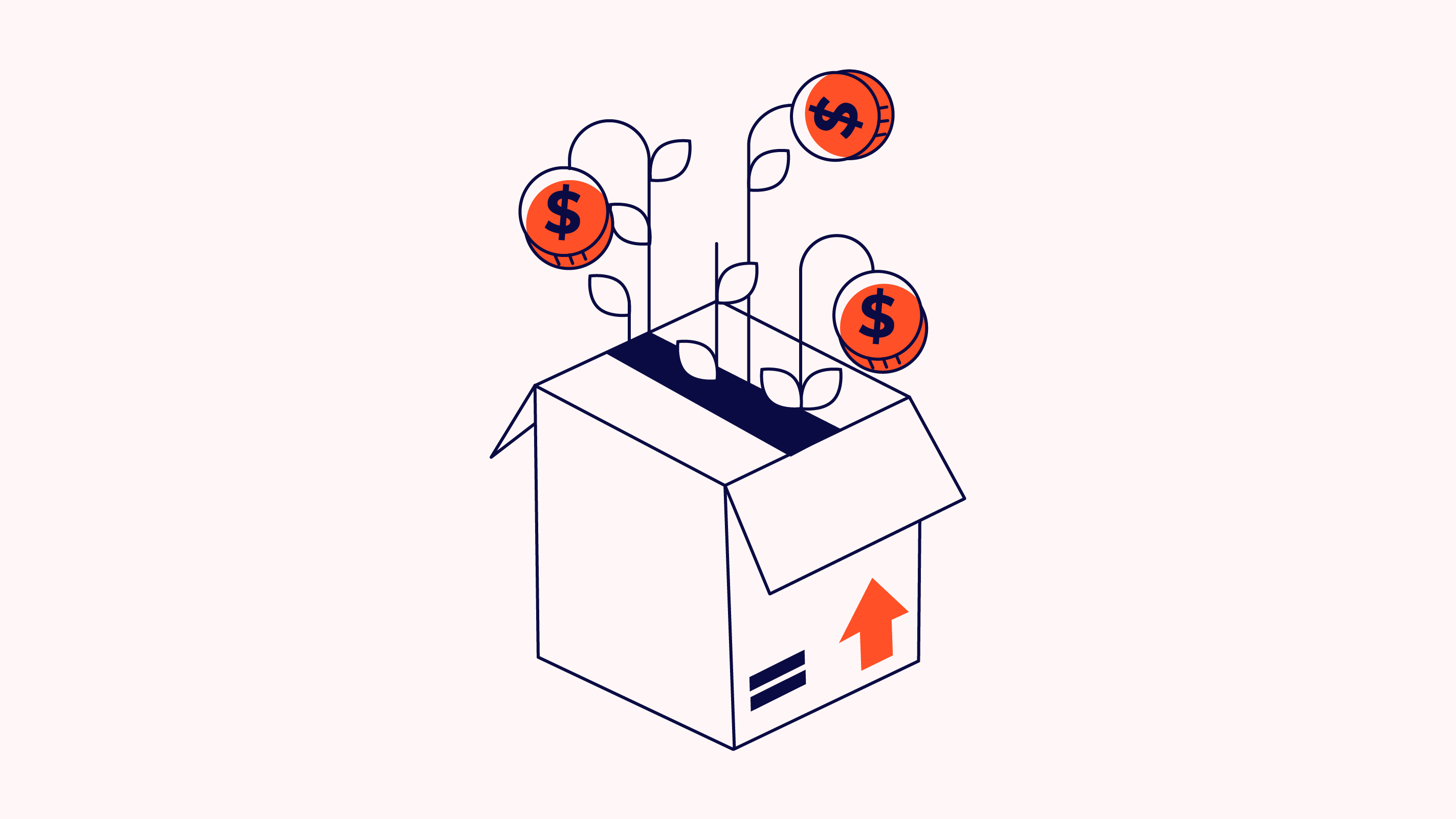Plastic Not Fantastic: A staggering 87% of consumers prefer purchasing from businesses that minimize plastic use, highlighting the significant impact of sustainability on consumer choices.
Eco-packaging Equals Growth: Implementing a sustainable ecommerce packaging strategy can boost your business's reputation and foster growth by aligning with consumer environmental consciousness.
The Packaging Predicament: The production of over 140 million tons of plastic packaging annually, with a third attributed to unnecessary extras, exacerbates environmental waste issues due to low recycling rates.
Lingering Landfill Legacy: With 90% of plastic never recycled, the enduring problem of plastics crowding landfills becomes evident, illuminating the urgent need for sustainable packaging solutions.
A whopping 87% of consumers say that they are more likely to buy from companies that reduce their plastic use.
If you are purely considering your reputation, having a sustainable ecommerce packaging strategy can undoubtedly help your business to grow.
Consumers know that packaging and shipping have a considerable environmental impacts.
Over 140 million tons of plastic packaging are made annually, and around a third of this is from extra packaging such as bubble wrap and packaging beans.
This contributes to a huge amount of waste, as 90% of the plastic is never recycled, leaving plastics sitting in landfills for hundreds of years.
I sell many products through Amazon, so I don’t have control over all the packaging elements. However, I reduced plastic use in some elements of my business, including the primary product packaging and the safety packaging used in freight.
Customers rave about the quality of my packaging in product reviews, and it didn’t cost me any more money.
This guide will go through some of the best examples of sustainable packaging solutions. We’ll also give you some great tips for reducing your plastic use without compromising on the quality of the packaging.
What is Sustainable Packaging?
Sustainable packaging, also known as eco-friendly or environmentally friendly packaging, uses less plastic, has a smaller carbon footprint, and has a lower environmental impact.
Eco-friendly packaging can include plastic, but generally, it would be a biodegradable, recycled, or recyclable bioplastic.
Ecommerce packaging can include sustainable packaging materials made from renewable or recycled resources that can be recycled, composted, or biodegraded at the end of their lifecycle.
Eco-friendly packaging also considers the entire life cycle of the product, from the sourcing of materials, to the manufacturing process and the disposal or reuse of the packaging.
This is referred to as the circular economy—tracking material from cradle back to cradle (not the grave).
We are not just talking about the packaging of the product itself, it also includes the freight packaging such as packaging beans, bubble wrap, packing cartons, and any other packaging used during transport.
It includes additional packaging such as tape and stickers, pouches, shipping labels, and poly mailers.
Essentially, any packaging used to deliver products to online shopping customers can have an impact, and sustainable ecommerce packaging replaces traditional packaging with more sustainable options.
Types of ecommerce packaging to consider
We will look at three main types of packaging needs:
- Primary packaging: This is the packaging for the product itself, plus any additional materials such as tape, product inserts, and pricing labels.
- Secondary packaging: This is the packaging in which the product gets sent to the customer. This could be packaging from a shipping agent such as UPS, FedEx, or Amazon, or it could be your own packaging if you are shipping direct-to-consumer (DTC).
- Tertiary packaging: This is the packaging used by freight companies to send products to the warehouse, such as cardboard boxes and bubble wrap.
What Sustainable Ecommerce Packaging Alternative Can Make The Biggest Impact?
Ultimately, the best way to reduce packaging waste is to have no plastic packaging wherever possible and replace plastic with sustainable alternatives that are recyclable, biodegradable, or compostable.
For most ecommerce brands, removing plastic altogether isn’t an option.
But, we can try to reduce our impact using more sustainable materials and methods. Some ecommerce businesses are reducing their packaging to almost no packaging or having reusable packaging rather than single-use.
The packaging brand Returnity, for example, uses reusable packaging customers can send back.
They have worked with big brands such as New Balance and Estee Lauder to introduce reusable mailers, boxes, and tote bags.
All their packaging is still protective of the products, but it doesn’t involve any waste.

The main questions you need to ask to understand whether the packaging is sustainable are:
- Is it recycled?
- Is it recyclable?
- Is it reusable?
- Is it biodegradable or compostable?
- Are you reducing your overall packaging size or weight?
Your packaging doesn’t need to tick every single box. Still, by ensuring you are trying to minimize your impact where you can, your packaging can reduce its negative effect on the environment.
The Pros and Cons of Sustainable Packaging For Ecommerce Brands
As with any choice for your ecommerce brand, there are pros and cons to switching to sustainable packaging.
While I feel like the pros outweigh the cons, every brand needs to consider their options carefully. Here's a rundown of the benefits and disadvantages for your brand:
| Pros | Cons |
|---|---|
| Reduces environmental impact: Significantly cuts down waste and conserves resources. | Higher initial costs: Eco-friendly options are generally more expensive upfront. |
| Enhances brand reputation: Positions the brand as an environmental leader, appealing to eco-conscious consumers. | Limited material availability: Difficult to source eco-friendly materials in some regions, particularly when relying on imports. |
| Offers potential long-term cost savings: Using sustainable materials can reduce overall shipping costs due to lighter and smaller packaging. | May have lower durability and protection: Some sustainable materials do not perform as well as traditional packaging, requiring extra care in selection. |
Pros of sustainable packaging
Your brand and the planet you live on can both benefit from your decision to go green. Here are the advantages you could see from the switch.
Less environmental impact
The most obvious benefit of eco-friendly packaging is that it reduces waste and pollution and conserves natural resources.
Plastic packaging is the most significant contributor to waste in landfill, and it takes hundreds of years to break down.
Improved brand reputation
88% of customers want brands to help them make more ethical choices in their shopping decisions.
By having sustainable packaging, you can build your brand’s reputation as an environmental leader.
Potential cost savings
In some cases, eco-friendly packaging can be more cost-effective than traditional packaging, especially if made from recycled or renewable materials.
Also, if you change the size and weight of your packaging, you can save on ecommerce shipping costs and have a lower environmental footprint.
Cons of sustainable packaging
There can be some drawbacks to switching to eco-friendly ecommerce packaging. As you venture into this decision, it's good to be aware of what you could encounter.
Higher costs
Generally, eco-friendly packaging is more expensive than traditional packaging, at least in the short term.
However, more premium packaging can help you to provide a more premium product enabling you to charge a higher price.
Limited availability
It can be harder to source eco-friendly packaging, depending on where your business is based.
For example, it can be hard to find packaging without plastic if you are sourcing products from China. There are some options, such as Packoi, but it is much more limited.
Lower performance
Some eco-friendly packaging materials may not offer the same level of protection or durability as traditional packaging.
However, the quality of eco-friendly packaging has dramatically improved, as discussed below.
Testing the packaging before rolling it out across your business is crucial to ensure it still performs as you would expect.
7 Sustainable Ecommerce Packaging & Eco-Friendly Material Ideas
There are many ways to reduce plastic and make more sustainable packaging.
There are different materials you can use and different methods you can apply to reduce your impact.
Let's look at examples of how we can make these packaging options more sustainable.
1. Use paper and card mailers
When a product is sent to the customer, the most important part is that the product arrives safely and securely.
The mailer is also the first thing a customer will see from your brand, so it needs to create a good impression.
Historically, plastic has been used for mailing products as it is cheap and strong, and it is also easy to tailor the color and design of the custom packaging to match your brand.
But more often now, brands are choosing paper and card mailers.
Even Amazon is now sending most of their orders with recycled paper packaging.
Brown craft paper (also called Kraft paper) is the most common material for paper packaging, as it is thick and strong, cheap to produce, and easily recyclable.
Craft paper is also easy to customize with your brand colors.
Paptic is a packaging brand that creates stunning-looking mailers for ecommerce brands. The packaging design can be completely customized for your brand, and they look great.
They are also made from recycled materials and can be recycled once the customer has finished. The paper bags are also strong enough for the products to be returned, which is great for customer convenience.

When designing your own paper packaging, make sure you test the packaging to make sure it is strong enough to be reused.
Customers like to return the products in the same packaging, so you must make the packaging sturdy enough for the return journey.
2. Go fungal with mushroom-based mycelium packaging
One of the main problems with plastic packaging is that it can take a very long time to break down.
Plastic can be left in landfill sites for years or break down into microplastics and pollute the environment.
Mycelium or mushroom packaging is entirely biodegradable so it will break down into the soil.
Mushroom packaging is ideal if your product is breakable, as it is very strong and protective. The packaging brand Ecovative has created innovative mushroom packaging that is grown into the correct shape. It almost sounds like science fiction!
They make sturdy styrofoam-like packaging that protects your products from breakages, which is ideal for glass or delicate products.

3. Feed gardens with compostable packaging
Plastic packaging is popular because it is robust, cheap, and adaptable for many purposes. But it causes a considerable amount of waste and pollution.
Compostable packaging often replicates the good qualities of plastic packaging but with a much lower environmental impact.
Some packaging labeled as biodegradable still contains some plastic material, it just breaks down.
This is good for taking up less landfill space, but it still leaves plastic residues seeping into the environment.
When choosing compostable packaging, you must ensure that every part of the packaging is compostable.
There is no point in having a compostable mailer taped shut with plastic sticky tape.
A good brand that has created lots of different compostable options is Hero. Their range of packaging includes tape, mailers, stickers, padded packaging, and everything else you need to have a compostable package.
You can even use your designs to make the packaging look beautiful. You can get everything in one place, so there are no excuses for plastic!

Other companies are using innovative materials such as cassava and seaweed to make biodegradable packaging.
Evoware makes all kinds of packaging from seaweed, and if you use innovative packaging like this, you should let your customers know, as they might share it on social media.
4. Choose repurposable packaging for zero waste
Some packaging, such as plant fiber bags, can be reused for something else once it has served its purpose.
For my brand, I use hemp bags as packaging for my products.
The benefit of this is the packaging is cheap but has a high-quality premium look and feel. The bags are also reusable, and we have comments in our reviews and on social media about how practical the tote bags are.
The bags are lightweight yet still give protection from scratches and light knocks.
They are my favorite kind of eco-friendly packaging as they can be easily branded, so when the customer re-uses them, your logo is still on show.
5. Make your outer packaging eco-friendly
Secondary and tertiary packaging, such as shipping boxes, tissue paper, bubble wrap, filler, and packaging beans, account for a third of all packaging waste.
Plastic wrapping, such as bubble wrap, can take hundreds of years to break down.
In contrast, eco-friendly options are biodegradable, compostable, or made from recycled materials, reducing their environmental impact and preventing waste.
Using eco-friendly packaging demonstrates your commitment to sustainability and environmental responsibility, enhancing your brand's reputation and appealing to eco-conscious consumers.
Some eco-friendly packaging materials can be more cost-effective than traditional plastic bubble wrap and packaging beans, as they can be made from renewable resources or recycled materials, reducing the cost of raw materials.
A good alternative to plastic bubble wrap is GreenWrap, which is folded, corrugated cardboard.
Another option is to use a brand such as Storopack, which makes all kinds of eco-friendly packaging materials.
Their AirPlus range provides various air-filled packaging options to protect your products during transit.


6. Reduce package sizes
The size of your parcels can have a massive impact on both your costs and the environment.
When you send a product to the customer, the shipping cost is usually decided on the size and weight, or a combination of both.
By having overly large packaging, you could be adding extra costs for no reason. If you use marketplace shipment such as FBA, your fees will also be decided by the dimensions and weight of your products.
It’s not very sexy, but it is essential to make sure you use the correct packaging sizes!
The package size also has a big impact on freight, as it is priced on volumetric weight, so the more volume you can save, the cheaper your freight will be.
If you can fit more into your shipping container, you will also need to make fewer shipments, saving costs and also saving on travel emissions.
Freight is often one of the largest costs in your supply chain, so it is crucial to optimize it to make it more efficient.
7. Keep it traditional by using glass and metal
Some traditional packaging is very sustainable.
Glass and metal for food packaging have been used for many years as they are easy to recycle, keep products fresh, and are cheap and simple to produce.
Today, some companies use metal as part of the product packaging for their products because it can also double up as a storage box for the products.
These types of packaging have the advantage of being strong and light but also have a premium feel.
A great example of this type of packaging is the English tea brand New English Teas.
Best Sustainable Packaging Companies to Simplify Going Green
Finding great suppliers for your shift to green shipping can be tough, but luckily, we've done our homework on this matter.
Check out our in-depth guide to the best sustainable packaging manufacturers out there, so you can quickly make your move to a greener future.
Here's a sneak peek at what we found:
| Company | Best For | Noteworthy Features |
|---|---|---|
| Ernest Packaging | Custom sustainable packaging solutions | Design and production capabilities for minimal material use, 100% recyclable materials, cost reduction strategies. |
| Ranpak | Tailored sustainable packaging equipment | Consultations for eco-friendly equipment, performance testing, cost estimates, suitable for various industries. |
| A New Earth Project | Recyclable packaging | Focus on easy recycling, high-level sustainability standards, offers recyclable bags, mailers, and protective bumpers. |
| The Better Packaging Co. | Packaging from recycled ocean-bound plastic | Products made from ocean-bound plastic, lower carbon footprint, also offers bamboo packaging. |
| Noissue | Accessible sustainable packaging for various businesses | Low minimum order requirements, compostable, reusable, and recyclable options, customization with QR codes. |
| EarthPack | Customizable eco-friendly ecommerce packaging | In-house design services, various eco-friendly packaging options like mailers and boxes, over 30 years of experience. |
| EcoEnclose | Circular and regenerative packaging | 100% recycled and biodegradable options, innovative sustainable materials like algae ink and ag waste paper. |
| Elevate Packaging | Compostable packaging and labels | Offers North America’s only certified compostable labels, all components are compostable, suitable for various industries. |
| Sustainable Packaging Industries | Molded pulp packaging for shipping | Chemical-free pulping process, custom designs available, products include blocking, bracing, and cushioning options. |
| Paper Mart | Wide range of post-consumer paper-based products | Large selection of corrugated boxes, bags, uses eco-friendly inks, offers custom design services for branding. |
Sustainable Ecommerce Packaging Helps Your Business and The Planet
Ecommerce packaging has a massive impact on the environment, and while you need to factor in your bottom line, it is important to also reduce your environmental footprint.
Even if the environment isn’t something you personally think about on a day-to-day basis, you can be sure that your customers will, and many consumers choose businesses with good environmental credentials.
Today, sustainable ecommerce packaging isn’t nearly as expensive as it used to be, and if you use techniques to reduce the size of the packaging, you may even find you save money in the long run.
For more information about ecommerce business management, sign up for The Ecomm Manager newsletter!



